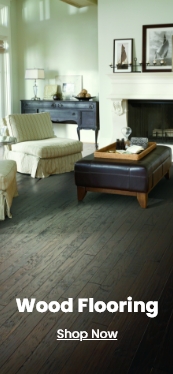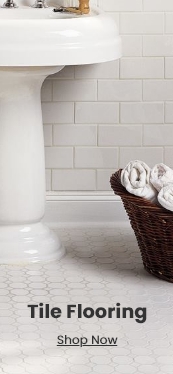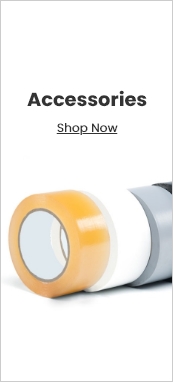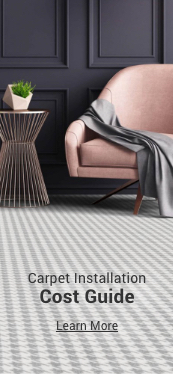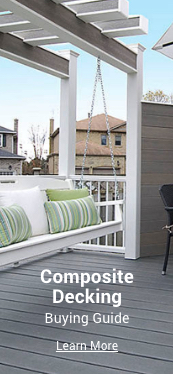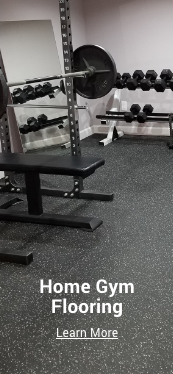
Flooring for Flood-Prone Areas
Protect your home with the best flooring for flood prone areas. There are many options for those areas that are prone to water damage, and we will help you find the solution that’s best for you.
Finding the right flooring for basements and other flood-prone areas is no small task.
We understand that the last thing you want to do is replace your floor every time there is a flood due to water damage. While there is no *perfect* solution, there are many flooring options that may fit your needs, including new and trendy waterproof flooring options. The most common types of flooring that are generally recommended for use in wet or
The most common types of flooring that are generally recommended for use in wet or flood-prone areas are vinyl, ceramic tile, concrete that is either treated (stained or epoxied) or waterproofed, rubber, and believe it or not, an inexpensive carpeting solution.https://www.flooringinc.com/tile/all.html#!utm_source=blog&utm_medium=post&utm_campaign=flooring-for-flood&filter=382
Vinyl Flooring
Vinyl flooring is available in rolls, tiles or planks. Usually, vinyl is adhered down using a latex flooring adhesive. Many vinyl tile options are self-sticking and can be installed easily by the average
Many vinyl tile options are self-sticking and can be installed easily by the average homeowner. Some vinyl plank flooring options also include an interlocking edge that
Some vinyl plank flooring options also include an interlocking edge that allow the tile to be loose laid (put down without adhesive) however it is generally recommended to adhere down vinyl flooring in an area that is prone to flooding.
Pros of Vinyl Flooring for Flood-Prone Areas
- Easy to clean surface that is resistant to mold and mildew.
- Rolled vinyl will have very few seams which will give water the least amount ok places where water can try and get under the flooring surface.
- Inexpensive
- Can be installed by the average DIY homeowner.
Cons of Vinyl Flooring for Flood-Prone Areas
- Vinyl tile and plank flooring options will have more seams where water con potentially work its way under the floor surface.
- Bad insulator and will often feel cold to the touch.
Tile
Tile flooring needs to be adhered down with a thin-set mortar if used in a wet environment. You can also use premixed mastic adhesive, however, this is generally not recommended in wet environments or areas that are prone to floods. Tile should usually be installed by a professional installer.
Tile should usually be installed by a professional installer.
Pros of Tile Flooring for Flood-Prone Areas
- Impervious (<– literally means ‘not allowing fluid to pass through’) rated tiles are extremely resistant to water, mold and mildew.
- Easy to clean.
- Very durable (Once installed, the highest density porcelain grade tile are incredibly resistant to wear and tear)
Cons of Tile Flooring for Flood-Prone Areas
- Should be installed by a professional.
- A bad insulator and will feel as cold as your subfloor unless a cork underlayment or radiant heating is installed under the tiles.
- If installed over a concrete subfloor that is cracking or settling, the tiles could crack and settle with the subfloor.
Treated Concrete
Treated concrete usually refers to a concrete floor that has had a coating applied to it. The most common coatings that are used on concrete floors are stains and epoxies. A stain is very similar to a wood stain in that it adds color and a sense of depth to the floor surface. An epoxy floor coating is the most common floor coating found in garages since it is resistant to oil and solvent spills however it can be used in basements too. Either option can be installed by a confident DIY home
A stain is very similar to a wood stain in that it adds color and a sense of depth to the floor surface. An epoxy floor coating is the most common floor coating found in garages since it is resistant to oil and solvent spills however it can be used in basements too. Either option can be installed by a confident DIY home
An epoxy floor coating is the most common floor coating found in garages since it is resistant to oil and solvent spills however it can be used in basements too. Either option can be installed by a confident DIY home
Either option can be installed by a confident DIY homeowner, however, a professional is usually recommended. Stains usually are about as easy to apply as paint once the subfloor is cleaned. Epoxy tends to be a little more complicated of an install.
Pros of Treated Concrete for Flood-Prone Areas
- Stains are inexpensive.
- Can be installed by a confident DIY homeowner.
- Moisture resistant.
Cons of Treated Concrete for Flood-Prone Areas
- The install has to be done just right. The base concrete has to be perfectly cleaned and the finished surface should be treated with a sealant for stained concrete.
- The worst insulator out of the bunch and there is no way to add radiant heat to help warm the floor surface.
- Epoxy coatings can be more expensive.
Waterproofed Concrete
Waterproof concrete is the no frills least expensive flooring option that can work well in basements. This is the raw sub floor that is already in your basement that has been sealed with a waterproofing floor and wall sealer. Once applied, your floor will look like it was painted with a white paint. It won’t look pretty exactly but it will be functional, clean looking, and aid in keeping your basement dry.
Pros of Waterproof Concrete for Flood-Prone Areas
- Minimal cost.
- If you can paint, you can apply a waterproofer.
Cons of Waterproof Concrete for Flood-Prone Areas
- Also a bad insulator.
- The least attractive of all the options.
Rubber Flooring
Our rubber flooring is available in all kinds of colors and thickness options. Rubber is also available in interlocking tiles, straight cut tiles, and rolls.
The most common rubber flooring purchased is black rubber flooring since it is low in cost. This is because the rubber comes from an inexpensive raw material; recycled rubber tires. Brightly colored rubber is usually more expensive since it is made from a more expensive raw material; virgin rubber.
When you use rubber flooring in a flood-prone area, we recommend to loose laying the flooring down or adhering it with double sided carpet tape. This way if the area does flood, the flooring you can lift up and move it to a dry place to dry out or flip it over so both sides can dry out.
If you would like to glue down your rubber flooring in an area that may flood, we recommend using moisture cured polyurethane adhesive. This type of adhesive will hold together well in the event of a flood.
Pros of Rubber Flooring for Flood-Prone Areas
- Mold and mildew resistant.
- Black rubber flooring is low in cost.
- The installation can be done by the average Do-It-Yourselfer.
- If loose laid, the flooring can be removed to allow and the area and the flooring to dry quicker.
- An excellent insulator against sound transmission.
- Slip resistant.
Cons of Rubber Flooring for Flood-Prone Areas
- Colorful rubber can be more expensive.
- A poor insulator against temperature transmission. The floor will feel as cold as your sub floor unless radiant heating is used under the rubber.
- Can be quite heavy when using large rolls of rubber flooring.
Carpeting
So I’m guessing you are asking yourself how carpet could be a good floor covering option in a flood-prone area.
Well, it’s simple. Some forms of carpet can be very cheap.
Carpet is also available in the form of square cut tiles that can be adhered down withdouble-sided carpet tape. This makes for an easy installation and an easy removal of the carpet should the tiles get damaged in a flood.
We don’t generally recommend that broadloom carpet (roll out carpet) be used in an area that might flood however cheap bargain grade carpet tiles may make for an excellent solution depending on how often the area is likely to get flooded.
Pros
- Lowest in cost for low-grade carpet
- The best insulator and will feel the warmest to the touch.
- Carpet tiles can be installed easily with double sided carpet tape.
- Carpet tiles allow for only damaged tiles to be removed and replaced should flooding occur in a smaller area.
Cons
- Least durable of all the options. Will most likely have to get replaced in case of a flood.
- Mold and mildew can develop on carpet fairly easily if an organic food source and water is present.
- Roll out broadloom carpet should be installed by a professional.
While most floor covering should not be considered 100% waterproof, there are numerous options that can work well in flood prone areas. We hope this guide has been helpful to anyone who has or had flood concerns in and around their home.
No matter what flooring option you choose, we always recommend asking for samples. If you do have any questions or information to share which will help others who have had flooding problems, please leave them in the comment section below.



